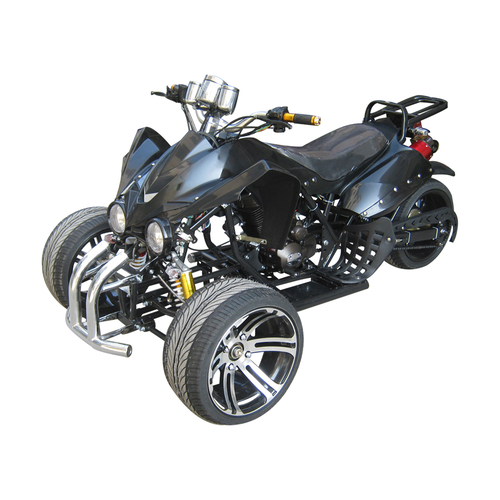Your vehicle’s maintenance is paramount and should not be overlooked. Changing your oil regularly will extend the life of your vehicle and allow it to perform at its peak level.
We created this step by step guide of how to change your vehicle’s oil, pay close attention and please share this content with others in need!
10W40 Non-synthetic ATV oil (Click here for oil)
Oil drip pan (Click here for oil drip pan)
Ratchet with 15 or 17mm Socket
Oil funnel
If you own a 110cc or 125cc Coolster / Tao-Tao / BMS / Apollo etc… ATV or Dirt Bike this tutorial will apply to you. Always refer to your vehicles owners manual when performing any maintenance.
STEP 1: We strongly suggest placing your ATV or Dirt Bike on a lift or jack-stand to allow the maximum amount of oil to drain from the vehicle and also to provide you ample space to work. Always lock the vehicles front brakes to avoid having vehicle rolling around while you perform maintenance.
STEP 2: Locate your vehicle’s oil drain plug located directly under the right side of your engine.
Note: There are two bolts under the engine that look similar. Only touch the larger one on the right side facing vertically. Do not unscrew the smaller bolt.
STEP 3: Place your oil drip pan directly underneath the oil drain plug. Using your 15 or 17mm wrench, remove the oil drain plug screw to allow the oil to drain into the oil pan. Allow the vehicle 20-30 minutes to fully drain of all oil. If the oil smells burnt or has metal shavings/particulates present this may be indicative of internal engine issues, and should be brought in for service immediately.
Note: Do not lose the silver washer that is attached to the drain plug or else the vehicle will leak oil. Make sure you reinstall the washer along with the oil drain plug bolt.
STEP 4: Once all oil has been drained, re-install the oil drain plug along with the drain plug washer.
STEP 5: Locate the oil dipstick (sometimes silver or yellow cap) on the right side of the engine. Unscrew the dipstick using pliers or fingers.
STEP 6: Insert oil funnel into the dipstick cavity and add the appropriate measure of 10W40 Non-synthetic ATV oil.
Note: For 110cc models add approximately 1/2 quart (500ml) oil and top off using dipstick as a guide when vehicle is flat. For 125cc models add approximately 3/4 quart (700ml) oil and top off using dipstick as guide when vehicle is flat.
STEP 7: To check oil level, screw dipstick fully in and then pull back out to verify oil level is at its required mark. Add oil as necessary to meet the top line circle of dipstick.
Your oil change is now complete, congratulations! Periodically check you oil dipstick to see if you oil is getting dirty.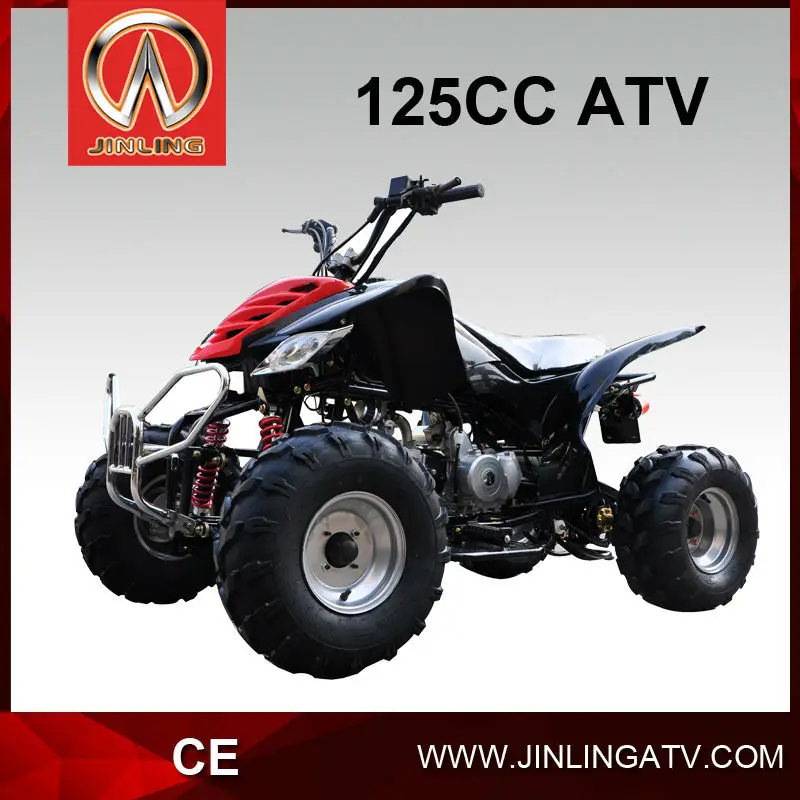 If you oil look dirty, it’s most likely time for an oil change!
If you oil look dirty, it’s most likely time for an oil change!
Approximately 8 hours of riding will require an oil change.
We hope this helped, please check out our other informative guides on how to properly maintain your vehicle.
• VJG Interactive
IT’S all about THE LubE!
Welcome to this week’s tech talk at Venom Motorsports!
A few of you have written with concerns about “breaking in your new bike engine” and which oil to use...so in this week’s blog we are going to tackle both subjects.
Please click on our excellent Amsoil “Lubrication” video links below for more information.
Keep in mind that this information applies to all of our excellent gas powered Super Pocket Bikes, Dirt Bikes and ATVs!
Ok, onto this week’s topics;
Tim. ..What does the term “break in period” mean?
..What does the term “break in period” mean?
“Break in period” is a term that refers to the wearing in of mating parts in any mechanical assembly. Initially there is always going to be some wear on the parts in a mechanical assembly, this is true for all the toys we love. ATVs, bikes, scooters, cars, boats...basically anything with an internal combustion engine has a break in period. The “break in period” will also vary with the type of device we are discussing.
As a Mechanical Engineer with many years of experience it is my opinion that this wearing in period is very normal and occurs in all internal combustion engines.
Some manufactures will try to tell you that a “break in period” is no longer required as our advances in manufacturing are so high tech. I thank them for their thoughts on the subject and still follow my own “break in period” advice and share that with you.
So, in my opinion the “break in period” of our ATVs and bikes typically occurs during the first 25 hours of operation.
Like you, I enjoy my toys and have used my “break in period” system for many years. To date I have never suffered an engine failure...knock on wood!!!
My break in technique is really very simple. Before starting your new bike check the lube oil level with the engine dip stick and ensure that it is full. Then drive your bike gently for the first 25 hours of operation. Never hold the same engine rpm or speed for an extended period of time. Speed up and slow down often, change the speed gently, no heavy throttle moves.
In other words...No flat out high speeds for the first 25 hours of operation!
Don’t ride it...like ya stole it.LOL. You get the idea right?
After the first 5 hours of operation, change the oil and use the Amsoil premium oil that Venom Motorsport has included with your bike for that very important first oil change.
In the spirit of the Holiday season this is a special gift from Moose! What a nice guy!
This Amsoil premium oil provides the best possible engine protection available and we hope you will continue to use it for each oil change in the future. This will ensure that your “toys” work well for many years.
This will ensure that your “toys” work well for many years.
These Amsoil premium engine oils are available for your Bike, ATV or Scooter online at our web site https://www.venommotorsportscanada.com/. Your baby is worth it!
Tim...How often should I change the engine oil in my Venom Bike or ATV?
This is a bit of a tricky question...
Generally speaking, I recommend that you change your engine oil each Spring before your first ride of the season.
If you have an extended driving season Spring, Summer, and Fall then two engine oil changes are in order. One in the Spring and one mid Summer.
If you drive your vehicle hard, then again two engine oil changes are in order. One oil change in the Spring and one mid Summer.
The overall consideration to think about when considering an oil change is the amount of discolouration or darkness in colour you see in your engine oil.
Your oil should always look clean. If your engine oil is dark, hazy or has visible metal particles in it, change it immediately.
Engine oil is the life blood of your engine. Clean oil performs better keeping your engine lubricated, cool and shifting well!
Tim...What oil do you recommend for my Four Stroke Super Pocket bike?
AMSOIL Synthetic Metric Motorcycle Oil is designed for metric bike owners who demand the absolute best lubrication for their motorcycles. Whether riding aggressively, cruising or in stop-and-go traffic, AMSOIL Synthetic Metric Motorcycle Oil delivers the benefits most important to riders, including premium wear protection; smooth, confident shifts and cool, clean performance. With AMSOIL Synthetic Metric Motorcycle Oil, riders enjoy the confidence and security that comes with providing their bikes maximum protection and performance. It is Warranty Secure™ and will not void your motorcycle's warranty.
AMSOIL, the leader in automotive synthetic lubrication, produced the world’s first API-qualified synthetic motor oil in 1972. Trust the extensive experience of AMSOIL The First in Synthetics® to do the best job protecting your engine.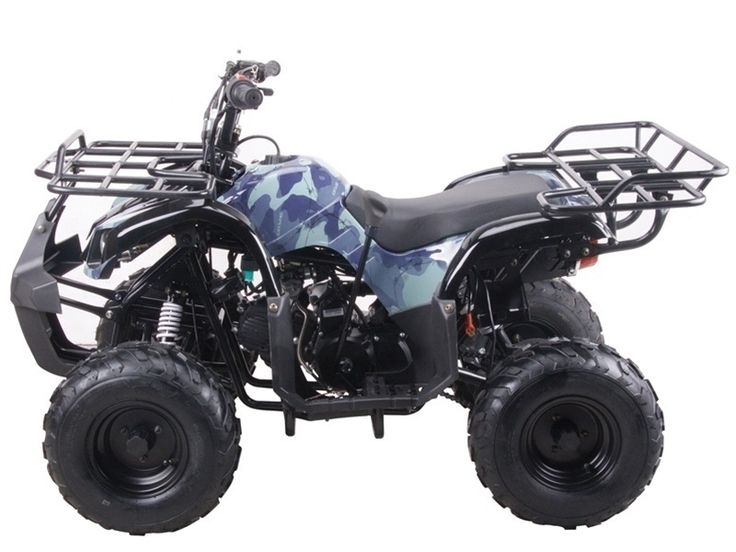
Reduces Friction, Heat and Wear
In high heat conditions, AMSOIL Synthetic Metric Motorcycle Oil exceeds the standard for high-temperature film strength to deliver excellent wear protection. It keeps engines running cool by effectively reducing friction and heat, and it contains a heavy treatment of anti-wear additives to reduce wear regardless of operating conditions. AMSOIL Synthetic Metric Motorcycle Oil is thermally (heat) stable and contains maximum levels of oxidation-inhibitor additives. It is extremely resistant to volatility and is engineered to prevent damaging sludge and carbon deposits for superior engine cleanliness.
Smooth, Confident Shifts
AMSOIL Synthetic Metric Motorcycle Oil contains no friction modifiers and promotes smooth shifting and positive clutch engagement. It is engineered to control heat and prevent slippage and glazing, promoting longer clutch life.
Controls Foam
High-rpm operation causes some motor oils to foam. When foam bubbles travel between gear teeth or engine components, they collapse, allowing metal surfaces to contact, causing wear. AMSOIL Synthetic Metric Motorcycle Oil contains advanced anti-foam additives that help prevent foam, allowing riders to confidently push their bikes to the limit. GL-1 • API SG, SL/CF • JASO MA/MA2
When foam bubbles travel between gear teeth or engine components, they collapse, allowing metal surfaces to contact, causing wear. AMSOIL Synthetic Metric Motorcycle Oil contains advanced anti-foam additives that help prevent foam, allowing riders to confidently push their bikes to the limit. GL-1 • API SG, SL/CF • JASO MA/MA2
Delivers Superior Rust and Corrosion protection
Motorcycles are prone to rust from storage, humidity and short drives. Rust can cause major damage, such as uncontrolled wear, compression loss and blow-by. Good rust protection, however, comes by design and is not natural to motor oils. Unlike many motorcycle oils, AMSOIL Synthetic Metric Motorcycle Oil contains special anti-rust agents that deliver superior rust protection. With its high 11.1 total base number (TBN), AMSOIL Synthetic Metric Motorcycle Oil provides greater protection from acid corrosion and helps maintain internal engine cleanliness.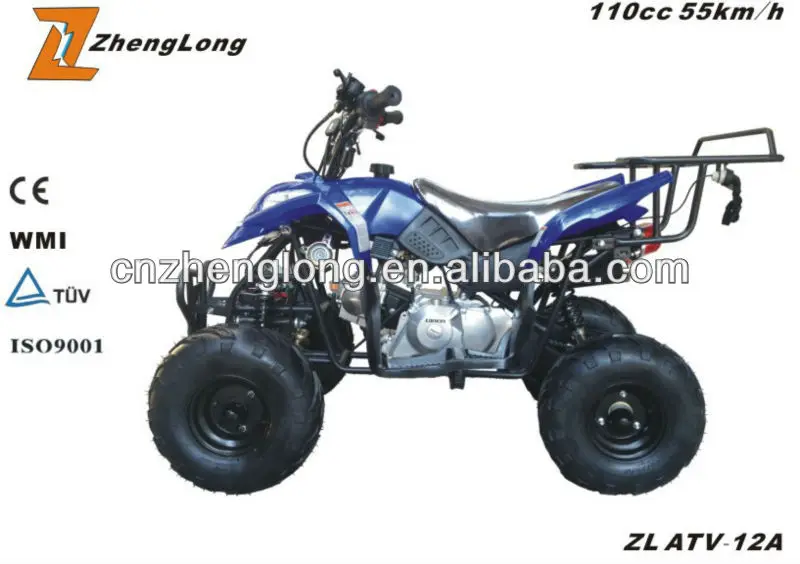
APPLICATIONS
AMSOIL 10W-40 Synthetic Metric Motorcycle Oil is engineered for motorcycles that require 10W-40 motorcycle oil, including those made by Honda, Yamaha, Kawasaki, Suzuki, Triumph, Can-Am and BMW.* Recommended for transmissions requiring an API GL-1 fluid. Not recommended where an API GL-4 or GL-5 gear oil is required.
SERVICE LIFE
Recommended for use up to twice the motorcycle manufacturer-recommended change interval (miles/hours) or one year, whichever comes first, in engines and transmissions. When using an oil filter other than AMSOIL Ea® Motorcycle Oil Filter, change the filter at standard intervals. Racing or modified engines are excluded from extended drain interval recommendations; oil changes are at the owner's discretion.
WARRANTY SECURE™
AMSOIL Synthetic ATV/UTV Motor Oil is Warranty Secure™, keeping your factory warranty intact. AMSOIL Synthetic ATV/UTV Motor Oil is a high-performance replacement for vehicle manufacturer-branded products and is also backed by the AMSOIL Limited Warranty (G1363). For details, visit www.amsoil.com/warrantysecure.
AMSOIL Synthetic ATV/UTV Motor Oil is a high-performance replacement for vehicle manufacturer-branded products and is also backed by the AMSOIL Limited Warranty (G1363). For details, visit www.amsoil.com/warrantysecure.
Tim...What oil do you recommend for my Four Stroke Dirt Bike?
10W-40 Synthetic Dirt Bike Oil
AMSOIL INC., the premier manufacturer of synthetic motorcycle lubricants, focuses on improving lubricant performance so riders can focus on improving their performance on the trail or the track. That's why AMSOIL is the Official Oil of Monster Energy Supercross, AMSOIL Arenacross, AMSOIL GNCC and the AMA Amateur Nationals.
Delivers Confidence in Clutch Feel
AMSOIL Synthetic Dirt Bike Oil’s superior friction-durability properties help minimize clutch slippage, fade and chatter, giving riders consistent clutch feel during takeoffs or when maneuvering around obstacles on the trail. In an extreme simulated-start test, AMSOIL Synthetic Dirt Bike Oil continued to deliver consistent clutch feel following 32 simulated race starts, while a leading original equipment manufacturer (OEM)-branded oil demonstrated inconsistent clutch-lever action and poor clutch feel after 16 starts. The clutch plates lubricated with AMSOIL Synthetic Dirt Bike Oil remained clean and in good overall condition, while the plates using the OEM oil revealed discoloration and wear. AMSOIL Synthetic Dirt Bike Oil’s superior performance helps instill in riders the confidence that their bikes will perform consistently in all types of riding conditions.
The clutch plates lubricated with AMSOIL Synthetic Dirt Bike Oil remained clean and in good overall condition, while the plates using the OEM oil revealed discoloration and wear. AMSOIL Synthetic Dirt Bike Oil’s superior performance helps instill in riders the confidence that their bikes will perform consistently in all types of riding conditions.
Protects Against Wear
AMSOIL Synthetic Dirt Bike Oil withstands high-rpm operation, extreme heat and mechanical shear. Its synthetic base oils naturally resist viscosity loss and provide a protective film against wear to gears, bearings and pistons. Its anti-wear additives provide an extra measure of protection, promoting long component life to help riders get the most out of their bikes.
RACING IS RESEARCH™
AMSOIL Synthetic Dirt Bike Oil underwent extensive on-track testing in the bikes of AMSOIL-sponsored professional riders on the GEICO/AMSOIL/Honda Factory Connection and Team Babbitt's racing teams. A combination of racer feedback and lab testing allowed AMSOIL to fine-tune AMSOIL Synthetic Dirt Bike Oil for outstanding wear protection and consistent clutch feel – benefits riders demand.
A combination of racer feedback and lab testing allowed AMSOIL to fine-tune AMSOIL Synthetic Dirt Bike Oil for outstanding wear protection and consistent clutch feel – benefits riders demand.
APPLICATIONS
10W-40 Synthetic Dirt Bike Oil: recommended for Honda®, Yamaha®, Kawasaki®, Suzuki®, Husqvarna® and other dirt bikes where 10W-40 motorcycle oil is used. Recommended for separate-sump applications such as Honda CRF, and many two-stroke dirt bikes. JASO MA, API SG, SJ, SH, SL.
*All trademarked names are the property of their respective owners and may be registered marks in some countries. No affiliation or endorsement claim, express or implied, is made by their use.
SERVICE LIFE
AMSOIL Synthetic Dirt Bike Oil should be changed according to the vehicle manufacturer's recommendations.
AMSOIL PRODUCT WARRANTY
AMSOIL products are backed by a Limited Liability Warranty. For complete information visit www. amsoil.com/warranty.aspx.
amsoil.com/warranty.aspx.
Tim...What oil do you recommend for my Four Stroke ATV?
10W-40 Synthetic ATV/UTV Engine Oil from Amsoil.
AMSOIL synthetic technology protects hot, high-revving engines against wear. AMSOIL Synthetic ATV/UTV Motor Oil is Warranty Secure™ and will not void your ATV or UTV warranty. It is a cost-effective, high-performance alternative to original equipment manufacturer (OEM) fluids.
Severe-Service Engine Protection
Many enthusiasts modify their ATVs or UTVs with roof and door panels, skid plates, a winch, a plow or other accessories that add weight and increase the severity of operation. Aggressive riding and tackling tough terrain place additional stress on the engine. Increased heat generated during severe-duty operation causes oils designed for standard service to break down sooner, increasing the risk for wear. AMSOIL Synthetic ATV/UTV Motor Oil’s synthetic technology delivers reserve protection against heat. It provides reliable wear protection and aids in cooling shrouded engines.
It provides reliable wear protection and aids in cooling shrouded engines.
Confidence in Clutch Feel
AMSOIL 10W-40 Synthetic ATV/UTV Motor Oil's superior friction-durability properties help minimize clutch slippage, fade and chatter, giving riders consistent clutch feel during takeoffs or when manoeuvring around obstacles on the trail. It delivers confidence that ATVs will perform consistently in all types of riding conditions
Wet-Clutch Compatible
AMSOIL Synthetic ATV/UTV Motor Oil contains no friction modifiers and promotes smooth shifting and positive clutch engagement. It controls heat and helps improve clutch life.
RACING IS RESEARCH™
AMSOIL Synthetic ATV/UTV Motor Oil underwent on-track testing in the ATVs and UTVs of AMSOIL-sponsored professional riders in the AMSOIL GNCC Series. It is fine-tuned for outstanding wear protection and consistent clutch feel.
APPLICATIONS
AMSOIL 10W-40 Synthetic ATV/UTV Motor Oil is recommended for use in ATVs and UTVs that require a 10W-40 motor oil, including those made by Kawasaki®, Suzuki®, Can-Am®, Honda®, Yamaha®, Kubota® and John Deere®.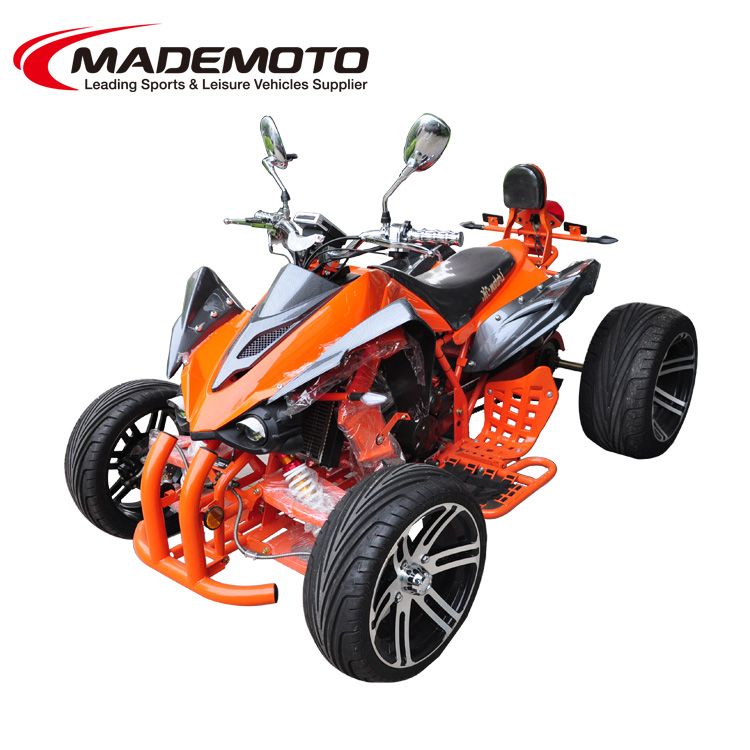
SERVICE LIFE
Follow the original equipment manufacturers oil change recommendation.
WARRANTY SECURE™
AMSOIL Synthetic ATV/UTV Motor Oil is Warranty Secure™, keeping your factory warranty intact. AMSOIL Synthetic ATV/UTV Motor Oil is a high-performance replacement for vehicle manufacturer-branded products and is also backed by the AMSOIL Limited Warranty (G1363). For details, visit www.amsoil.com/warrantysecure.
Tim...What oil do you recommend for my Two Stroke bike or ATV?
DOMINATOR® Synthetic 2-Stroke Racing Oil from Amsoil.
Racers can't win what they don’t finish. That’s why AMSOIL formulators built DOMINATOR® 2-Stroke Racing Oil. This complex blend of oils and additives directly addresses the heat, pressure and friction of race-engineered engines. These engines operate on the edge, yet engine reliability is critical. DOMINATOR does an outstanding job protecting high-performance engines.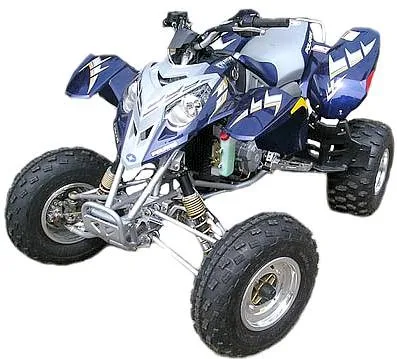 It adds durability that professional racing teams depend on and delivers confidence so engines can be pushed to the limit.
It adds durability that professional racing teams depend on and delivers confidence so engines can be pushed to the limit.
Excellent Lubricity and Film Strength
High-performance and race-designed two-stroke engines operate under severe conditions. They are modified for higher compression ratios, higher rpm and leaner combustion, all of which increase heat and pressure. High heat can quickly burn off light oils and cause rapid piston expansion, decreasing piston-to-cylinder wall clearances and increasing the likelihood of piston scuffing and seizure. High pressure can exceed the film strength of low-viscosity oils, which promotes crankshaft bearing wear and pitting.
DOMINATOR is purpose-built for outstanding film strength and lubricity. It is engineered with carefully selected, higher-viscosity synthetic base oils to withstand the high heat and pressure common to high-performance and racing applications. DOMINATOR’s anti-friction chemistry is race-proven to provide an extra measure of protection against piston scuffing and bearing wear.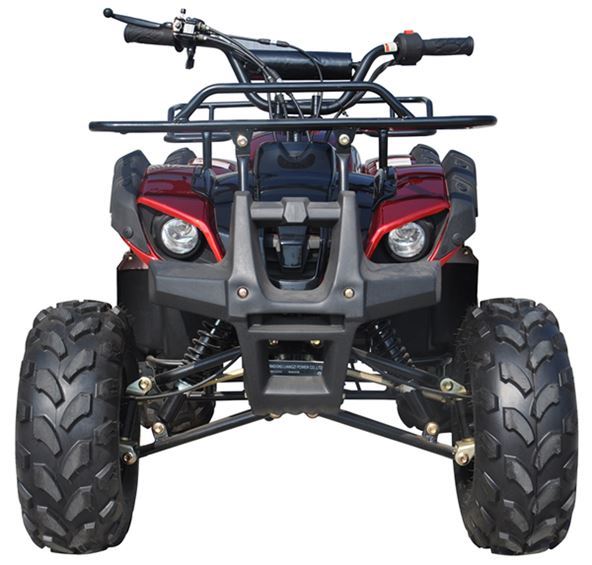
Outstanding Cleanliness
The oil and fuel burned in the two-stroke combustion process leave destructive deposits on the pistons, rings and in the combustion chamber. Excessive deposits can lead to catastrophic engine problems, including ring sticking, exhaust port blocking and pre-ignition.
 DOMINATOR Synthetic 2-Stroke Racing Oil, however, delivered exceptional protection despite the severe conditions. The rings and pistons were still free and the crankshaft turned freely. Scheuring Speed Sports is able to reuse the engine after repairing the melted parts, providing concrete testimony of DOMINATOR's superior performance.
DOMINATOR Synthetic 2-Stroke Racing Oil, however, delivered exceptional protection despite the severe conditions. The rings and pistons were still free and the crankshaft turned freely. Scheuring Speed Sports is able to reuse the engine after repairing the melted parts, providing concrete testimony of DOMINATOR's superior performance. Not suitable for use with alcohol or nitro-methane fuels.
Not suitable for use with alcohol or nitro-methane fuels.This weeks excellent Video’s from Amsoil!
Amsoil: How is it made! To view click on the link below.
https://www.youtube.com/watch?v=NKkyL_ksUC8&list=PL8bK3RWt-FoWczpzV5U8ysbV2rCLI1Fdz
Amsoil Tech Tips: Dirt Bike Oil. To view click on the link below.
https://www.youtube.com/watch?v=ei_6z1BrDjc&list=PL8bK3RWt-FoVNkWM2IvuMMk8eOyHGSANF
Chris Borich ATV racer, AMSOIL sponsored GNCC racer, talks about racing, his engine and why he uses AMSOIL synthetic lubricants.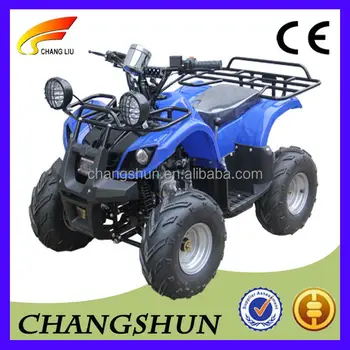 To view click on the link below.
To view click on the link below.
https://www.youtube.com/watch?v=gFGaNTdMQ_o&list=PL8bK3RWt-FoXXPA8dtL46nvUfF4fWUgem
If you have any tech questions about our vehicles, please feel free to email them to...
If your interested in purchasing Amsoil products, click here
Check out our blog next week as we look at bike electrical systems.
Till then, Enjoy the ride!
Tim Breton
Technical Support Specialist
Venom Motorsports Canada
1-855-984-1612
www.thebestoilforyourpocketbike.ca
www.thebestoilforyoursuperpocketbike.ca
www.thebestoilforyourbike.ca
www.thebestoilforyouratv.ca
www.thebestoilforyourdirtbike.ca
www.thebestoilforyourmotorcycle.ca
www.thebestoilforyouscooter.ca
www.thebestoilforyoursnowmobile.ca
www.thebestoilforyourseadoo.ca
www.thebestoilforyoursmallengine.ca
www.thebestoilforyourlawnmower.ca
www.thebestoilforyourchainsaw. ca
ca
www.thebestoilforhighperformance.ca
www.thebestoilforyourboat.ca
www.thebestoilforyourcar.ca
www.thebestoilforyourdiesel.ca
www.thebestoilforyourtractor.ca
If you decide to buy an ATV, then know that for the stable and proper operation of all its mechanisms, it is necessary to change the oil regularly. This applies not only to budget Chinese motorbikes, but also to expensive models from Japanese and European manufacturers. ATV parts will last much longer if you use quality lubricants.
Oil is poured into the following elements of the motorbike:
Lubricants are strongly discouraged because they not only reduce friction between vehicle parts, but also serve to remove heat, which helps prevent overheating.
Refer to the manufacturer's documentation for the best oil for your ATV model. Each bike has its own requirements for lubricants, and therefore it is recommended to study them carefully.
Each bike has its own requirements for lubricants, and therefore it is recommended to study them carefully.
Let's take a look at the three main types of ATV oils:
Each rider has the right to choose which oil is better to fill in ATVs 200 cubic meters and their other analogues. But still, it is not recommended to save on the composition, since the premature replacement of the vehicle engine will cost much more.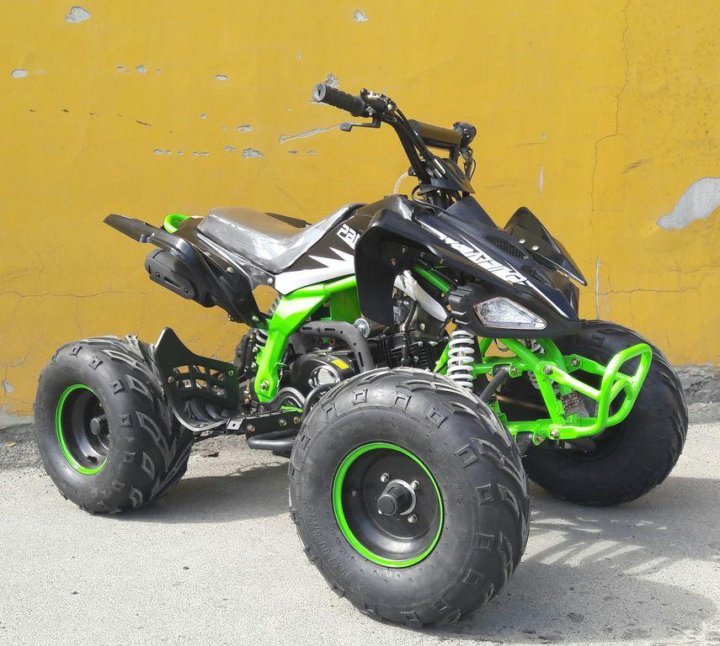
Motor oils for ATVs for 110, 125 cubic meters Castrol have proven themselves well among both ordinary motorists and professional riders. This lubricant is designed specifically for modern 4-stroke motorbike engines. The presence of special additives in the composition of the oil reliably protects the engine from wear even under the most extreme operating conditions.
It is recommended to use only high temperature oils with increased density in the ATV CVT. Such a lubricant should leave a dense oil film on the surface and in no case be splashed. It is worth pouring gear oil with a viscosity of 75W90 into the gearbox and gearbox of the ATV. This type of lubricant is suitable for most motorbike models, and therefore many manufacturers recommend it. For more information, please refer to the official vehicle owner's manual.
Please note that if your ATV model is equipped with a manual transmission, then engine oil should be poured into it. Gear oil, in turn, is suitable for automatic and semi-automatic boxes.
Gear oil, in turn, is suitable for automatic and semi-automatic boxes.
Changing the oil in a 110cc or 125cc Kid's ATV is a very simple task that you can do yourself if you wish. This procedure is performed as follows:
The ATV oil change interval depends on the ATV model and is indicated in the owner's manual. Usually, this procedure is recommended to be performed at least every 1000 km. If you purchased used motorcycles, then it is better to replace the lubricant immediately.
Usually, this procedure is recommended to be performed at least every 1000 km. If you purchased used motorcycles, then it is better to replace the lubricant immediately.
Occasionally the ATV may need an unscheduled oil change, such as after being immersed in water. If such a nuisance happened to your motorbike, then you need to disassemble it as soon as possible, drain the oil from all nodes and thoroughly dry every detail. Then, fresh lubricant should be poured into the gearbox, engine and variator. It is recommended to choose an oil according to the characteristics of your ATV, as well as to give preference to products of popular brands. Thus, you will significantly extend the service life of all functional components of the motorbike.
05/29/2021 5574
There are interesting recipes on American websites, they are translated and published by our Russian media, and many Russian amateur chefs also translate and cook for themselves according to American recipes.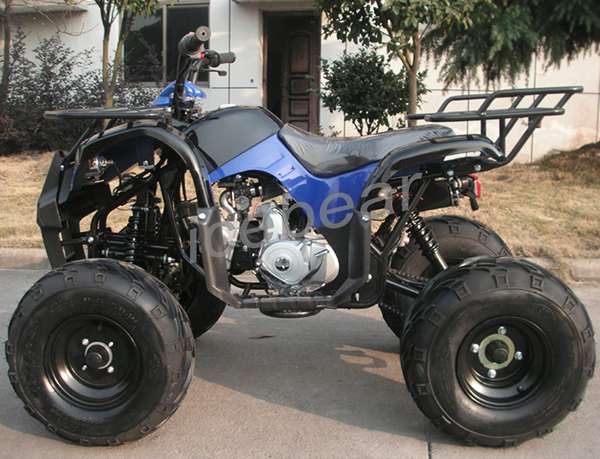 However, when translating, one often encounters unusual pounds and ounces, cups and sticks. Converting US weights and measures to the metric system is essential in baking where accuracy is critical. An incorrect measurement can upset the ratio and ruin the recipe.
However, when translating, one often encounters unusual pounds and ounces, cups and sticks. Converting US weights and measures to the metric system is essential in baking where accuracy is critical. An incorrect measurement can upset the ratio and ruin the recipe.
For your convenience, information is collected here that will greatly help in translating American recipes into Russian. Use this quick cheat sheet for equivalents:
tsp - teaspoon - teaspoon
tbsp - tablespoon - 1 tablespoon
ml - milliliter - milliliter
oz - ounce - Ounce
fl. oz - fluid ounce - fluid ounce
lb - pound - Pound
s - cup - Cup
gr - gram - gram
kg - kilogram - kilogram
F - Fahrenheit - degrees Fahrenheit
stick - stick
Instead of the usual faceted glass of 200 ml, Americans use a cup (cup) of 240 ml. Oil is measured with sticks. 1 stick = 113 grams.
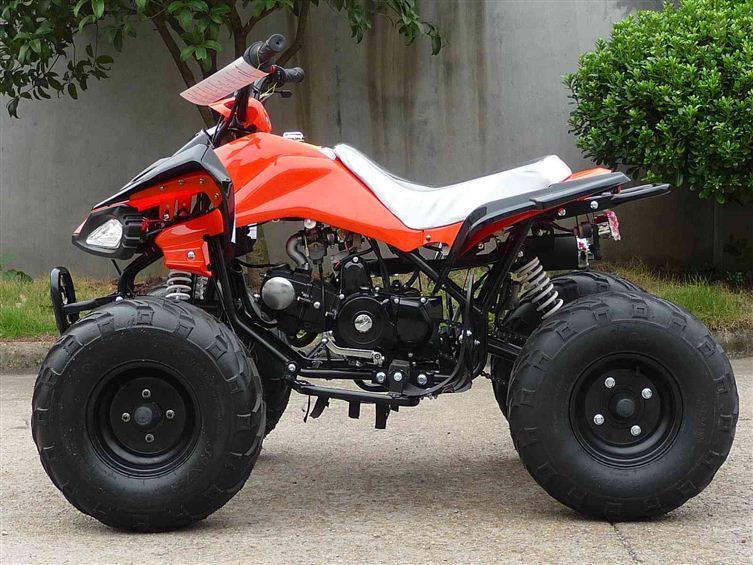 = 0.16 oz = 5 ml
= 0.16 oz = 5 ml Most ingredients can be converted from metric to volume and vice versa.
1 cup all purpose flour - 125g
1 cup white flour - 140g
1 cup sifted white flour - 115g
1 cup cake flour - 99g
1 cup sifted cake flour - 907 1 cup whole wheat flour - 150g
1 cup sifted whole wheat flour - 130g
1 cup bread flour - 136g
1 cup sifted bread flour - 130g
1 cup self-rising flour - 120g
1 cup pea flour - 90 g
1 cup tempura flour - 125 g
1 cup soy flour - 135g
1 cup almond flour - 100g
1 cup oatmeal - 150g
1 cup wholemeal cornmeal - 138g
1 cup fine corn flour - 179g
1 cup oats 85 g
1 cup butter - 227 g
1 cup margarine - 225 g
1 cup vegetable oil - 250 g
1 cup olive oil - 218 g
1 egg - 57 g
1 cup milk - 227 g
1 cup thick cream - 38 g
1 cup sour cream - 244g
1 cup yogurt - 244g
1 cup Parmesan cheese, grated - 120g
1 cup cream cheese - 120g
1 cup grated cheese - 100g
1 cup pumpkin, coarsely grated - 125g
1 cup zucchini, coarsely grated - 135g
1 cup lentils - 200g water 9079 chestnuts, chopped - 180g
1 cup white cabbage, chopped - 5g
1 cup Chinese or Savoy cabbage, chopped - 45g
1 cup coriander greens, fine - 60g
1 cup coriander greens, coarse - 30g
1 a cup of green peas - 160 g
1 cup baby spinach (leaves) - 50g
1 cup crushed dried dates - 180g
1 cup dates - 225g
1 cup raisins - 200g
1 cup honey - 340g
1 cup molasses - 325g
1 cup lemon balm 329g
1 cup pale molasses 340g
1 cup corn syrup 326g
1 cup maple syrup 340g
1 cup syrup 340g
1 cup currant 100g
1 cup blackcurrant 120 g
1 cup blueberries, blueberries, lingonberries - 100 g
1 cup raspberries, blackberries - 120g
1 cup strawberries - 200g
1 cup buttermilk - 225g
1 cup jam and jelly - 325g
1 cup jam, fruit puree - 225g
 American oil in grams , spoons and glasses:
American oil in grams , spoons and glasses: Americans sell oil not in packs, but in chopsticks. An American stick of butter weighs 113 grams, that is, 4 ounces.
This quick guide converts grams of butter into tablespoons and cups. Keep in mind that this particular conversion chart is for oil only.
Measuring the weight of your ingredients (grams) can help make your cooking accurate. This is especially true for baking.
This is especially true for baking.
Wheat flour is the most common flour used in baking. There are different types of wheat flour, and they vary in the amount of gluten.
Gluten is a natural protein in wheat and is what gives baked goods their structure. As the dough is kneaded, these gluten develop and become elastic. Durum wheat flour with a high protein content is called strong flour, it has a higher gluten content. Flour made from softer, lower protein wheat is called weak flour and contains less gluten.
All-purpose flour is formulated to have an average gluten content of about 12 percent. This makes it a good medium quality flour that can be used for baking anything from crispbread to biscuits, as well as cakes and pastries.
One sifted cup of all-purpose flour should weigh about 4.5 ounces or 125 grams.
Bread flour is a strong flour, which means it has a relatively high gluten content - typically around 13-14 percent.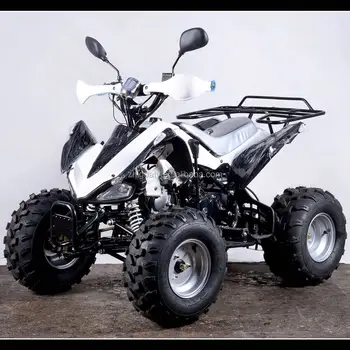 A handful of bread flour looks coarse and off-white. Bread flour is used to make crispy bread and rolls, pizza dough and similar products.
A handful of bread flour looks coarse and off-white. Bread flour is used to make crispy bread and rolls, pizza dough and similar products.
One cup of bread flour will weigh about 5 ounces or 140 grams.
Cake flour is made from soft wheat and has a lower gluten content of about 7.5-9 percent. Its grain is noticeably thinner than bread flour and is much whiter in color. Its fine, soft texture makes it suitable for delicate cakes and pastries.
One sifted cup of cake flour will weigh about 3.5 ounces or 99 grams.
Pastry flour is slightly stronger than baking flour at 9 to 10 percent gluten. It can be used for biscuits, muffins, biscuits, pie dough and softer yeast doughs. It has a slightly off-white color than Muffin Flour.
One sifted cup of confectionery flour weighs just over 3.5 ounces or about 101 grams.
Self-Rising Flour is peculiar.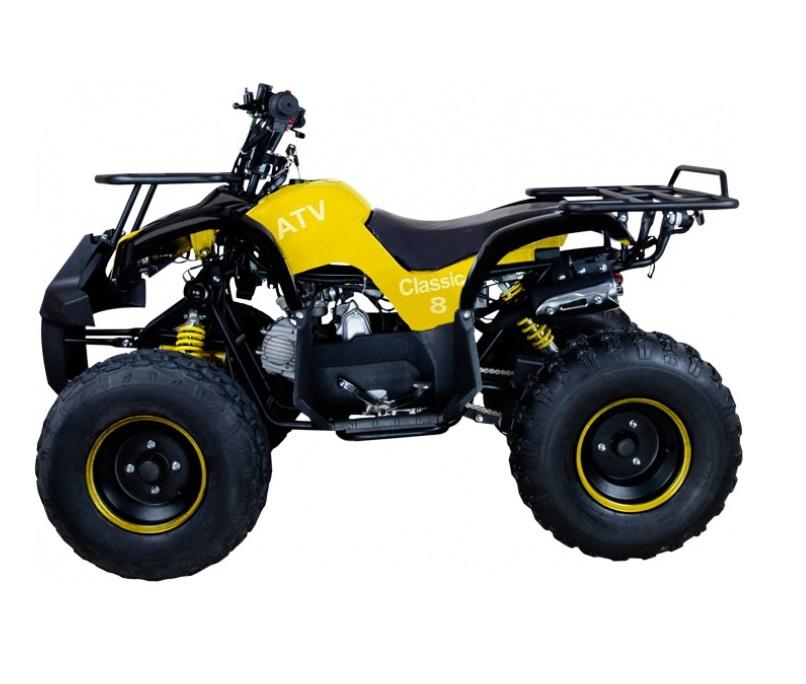 This is plain all-purpose flour with baking powder and salt added. Rather, it exists for convenience, its main problem: there is no way to control how much baking powder is in it. In addition, baking powder in flour when stored at home quickly loses its effectiveness. If you have no other options, this type of flour is best avoided. Self-rising flour should never be used to make yeast bread.
This is plain all-purpose flour with baking powder and salt added. Rather, it exists for convenience, its main problem: there is no way to control how much baking powder is in it. In addition, baking powder in flour when stored at home quickly loses its effectiveness. If you have no other options, this type of flour is best avoided. Self-rising flour should never be used to make yeast bread.
Whole wheat flour comes in two varieties: 100% whole wheat flour and white whole wheat flour. They have more fiber and other nutrients than all-purpose flour. Whole wheat flour is often mixed with all-purpose flour for a lighter texture and better lift.
One cup of whole wheat flour will weigh 4 ounces or about 113 grams.
 5 ounces or 99 grams.
5 ounces or 99 grams. Chicken eggs often play a decisive role in baking and many other recipes.
Various sizes of eggs are available for sale in the United States. Most American recipes are designed for a standard large egg (57 grams), denoted - 1 Egg (1 Eggs). Quite often, recipes indicate which egg is to be used, for example, Medium Eggs.
Egg size doesn't really matter if you're making scrambled eggs. It also doesn't matter if you use an egg as a binding ingredient when mixing pancake dough, in minced meat, or for brushing pastries. In these cases, just use the eggs you have on hand.
When you're baking pastry or making custard or emulsion, the amount of liquid in the egg is important to the success of the recipe.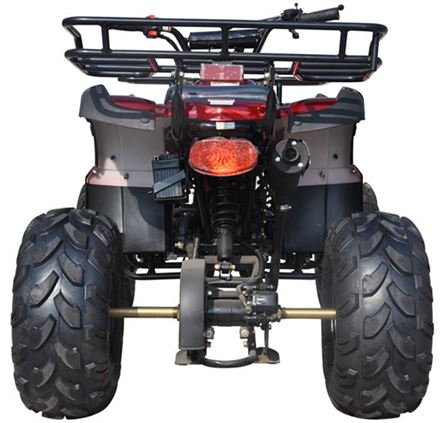 In these cases, pay attention to egg sizes and weights to adjust for what you have on hand. If the American recipe does not specify the size of the egg, then you need to use large eggs (Large Eggs).
In these cases, pay attention to egg sizes and weights to adjust for what you have on hand. If the American recipe does not specify the size of the egg, then you need to use large eggs (Large Eggs).
If a recipe calls for two or more large eggs, you may need to make adjustments if you only have small or medium eggs.
If the recipe calls for a different egg size than what you have, use the table below to convert the quantity to grams.
Small Eggs (S) - 42 grams - 1.5 oz
Medium Eggs (M) - 50 grams - 1.75 oz
Large Eggs (Large Eggs, L) - 57 grams - 2 oz
Extra Large Eggs (XL) - 64 grams - 2.25 oz
Jumbo Eggs - 70.9 g - 2.5 oz
Tiny Eggs (Peewee) - 35.4g - 1.25oz
1 large egg = 4 tablespoons liquid egg product
4 Extra Large or Jumbo Egg = 1 cup
1 large egg white = 2 tablespoons
8 to 10 large egg whites = 1 cup
1 large egg yolk = 1 tablespoon
12 to 16 egg yolks = 1 cup
6 extra-large egg whites = 1 cup
12 extra-large egg yolks = 1 cup
Duck eggs are much larger than chicken eggs, even larger than giant eggs.